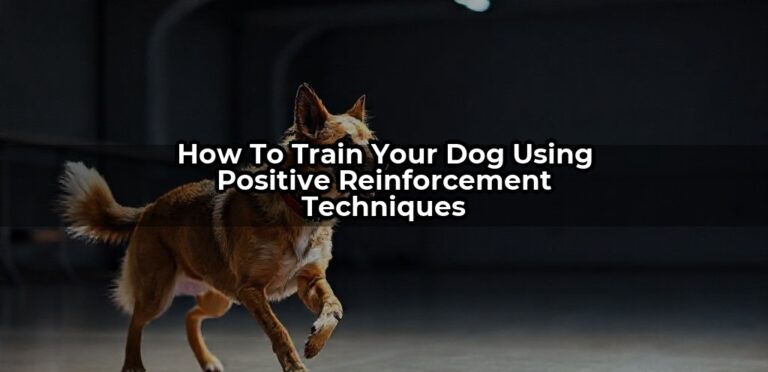Teaching Your Dog Fun Tricks: From Sit to Shake Paw
Ever watched a dog perform a slick trick and thought, “How did they teach that?” I’ve been there. My border collie, Max, was a nothing-special puppy until I started intentionally teaching him fun tricks. At first, it was just to impress friends or entertain the family. But soon, I realized that training tricks isn’t just about show — it’s a game-changing way to deepen your bond, boost your dog’s confidence, and keep their mind sharp. So, how do you get from basic commands to an entertaining “shake paw” or “roll over” in a way that’s sustainable and actually fun? That’s what I want to break down for you, based on my experience and some solid training principles I’ve picked up over the years.
The Problem: Why Teaching Tricks Matters (Even the Cute Ones)
Let’s cut to the chase. Many dog owners dismiss tricks as fluff — “My dog just needs obedience,” they say. But here’s the thing: tricks are more than just impressing friends at parties. They serve as mental stimulation, social engagement, and even a safety tool. Imagine this: your dog’s lying next to you, and you want to quickly get their attention in a crowded park. Well-timed tricks make that easy. Plus, the mental workout makes your pup happier and less prone to destructive behaviors from boredom.

professional content, business, technology, modern, clean, high quality
My own experience taught me that dogs who learn tricks tend to be more engaged, adaptable, and confident. They’re also less likely to develop separation anxiety or display destructive tendencies—because their brain is busy and fulfilled, not just waiting for walks or meal times.
Here’s the key: establishing a clear plan with achievable steps not only accelerates learning but makes training more enjoyable—for both of you.
Getting Started: Setting the Stage for Success
Understand Your Dog’s Learning Style
Not all dogs learn the same way. Some thrive on treats, others on praise, some need a lot of patience, and a few pick things up immediately. For Max, treats were king. Whenever he did a trick right, I was quick to reward with his favorite cheese bits. This immediate positive reinforcement made him eager to try again each time.
Tip: Watch how your dog responds during training. If treats don’t motivate, try more enthusiastic praise or playing with their favorite toy.
Create a Distraction-Free Environment
Initially, work in a quiet space where your dog isn’t distracted. If your home is noisy and chaotic, your dog might tune you out and lose focus. I found my kitchen worked wonders, especially during the first few sessions. As they progress, gradually introduce distractions — like the backyard or park — to ensure commands stick in real-world settings.
Tip: Keep sessions short — around 5-10 minutes max. Dogs learn better in bite-sized chunks, and longer sessions risk boredom.
Breaking Down the Trick: From Simple to Slightly More Complex
Establishing a Clear Cue
The foundation for any trick is the cue or command. For “sit,” I simply use the word “sit” consistently, and then immediately reward when Max obeys. Over time, he associates that word with the action. For trick-specific cues, be creative: “shake,” “paws,” “high five,” whatever is memorable and clear.
Tip: Use a consistent tone of voice and avoid changing it. Dogs respond better to consistency.
Utilizing Lures and Hand Signals
At first, lures are your best friends. If I wanted Max to shake hands, I’d show him my palm or hold a treat near his paw. As he reached for the treat, I’d say “shake” and reward every successful attempt. After a few sessions, I phased out the treat lure, and he responded to just the command and my hand signal.
Tip: Keep hand signals simple and natural. Overly complicated gestures confuse your dog and slow progress.
Reinforcing and Shaping Behavior
Start by rewarding small steps towards the trick. For “shake paw,” I initially rewarded Max when he reached his paw toward my hand. Later, only when he actually pawed at me, I gave a bigger reward. This shaping guides your dog toward the final behavior without frustration.
Tip: Be patient. Some behaviors, like “roll over,” can take days to master. Consistency and positive reinforcement win out over any quick fix.
Here’s an example of progress I’ve noticed: after a week, Max was pawing at my hand on command, then I added the cue “shake,” and bam—instant party trick.
Boosting Engagement: Making Tricks Fun and Rewarding
- Use Variety: Mix between different tricks and commands to keep your dog’s mind active. I’d alternate between “sit,” “shake,” and “spin,” which kept Max curious and motivated.
- Make It Playful: Incorporate toys or play into training. For “roll over,” I’d use a favorite squeaky toy, which made the trick feel like a game.
- Practice Socially: Once your dog can perform reliably in quiet surroundings, practice in the park where distractions abound. Always keep sessions upbeat and rewarding.
- Timing the Reward: Offer treats immediately — no exceptions. The connection between action and reward is what cements the behavior.
Common Pitfalls and How to Avoid Them
- Inconsistency: If you slip up on commands or rewards, your dog gets confused. Stick to your cues and reward system — it’s the backbone of timing good behavior.
- Pushing Too Hard: Long, frustrating sessions kill enthusiasm. End on a positive note, even if your dog just barely got the trick right.
- Ignoring Reset Moments: When your dog sneaks or deviates, don’t punish. Instead, reset and try again with more encouragement.
The Power of Patience and Persistence
Here’s what surprised me — teaching tricks is less about natural talent and more about persistence. Max took a solid two weeks before he reliably shook hands every time, but during those days, I saw behavior I’d never seen before: patience, focus, and a real desire to impress me. When you set clear, achievable goals, and reinforce with genuine enthusiasm, your dog’s confidence skyrockets.
Thinking about teaching your dog a new trick? Start today with simple commands, keep your sessions short, reward generously, and enjoy the journey. Just imagine the surprised looks when your pup nails a new trick in front of friends. That’s what makes it all worth it.
And trust me—once you’ve seen your dog master that first trick, like “shake paw,” you’ll be hooked. I sure was.
Once you’ve experienced that rewarding moment when your dog nails a new trick, it’s tempting to push further—yet striking the right balance between challenge and patience becomes crucial. Rushing through tricks might get quick results, but it often dents your dog’s enthusiasm and hampers genuine learning. Instead, focus on creating a series of small wins. These tiny successes encourage your dog to stay motivated, eager to perform, and confident in their abilities.
If your pup struggles with “shake paw,” don’t rush to repeat endlessly. Instead, incorporate breaks and keep the sessions lively. Think of it as a gym session—pushing too hard leads to burnout. Instead, aim for several short, engaging play sessions. When your dog offers a paw, immediately reward with a enthusiastic praise or a treat. Remember, timing matters the most—catch that good behavior just as it happens so your dog links the act directly to the reward.
Fine-Tuning Your Approach with Technique and Insight
Success in teaching tricks doesn’t depend on grand gestures or complex tools. Instead, it hinges on subtleties—your timing, your consistency, and your understanding of your dog’s unique learning style. For example, some pups respond best to visual cues, while others are more attuned to sounds or tactile signals.
For dogs that are more visual learners—think of breeds like Boxers or Dalmatians—using hand signals can be especially effective. You might start by demonstrating the “shake” motion with your hand, then pairing it with the verbal cue. Over time, this minimizes confusion, and your dog begins to associate both the visual and verbal cues seamlessly.
Conversely, dogs that are more scent-oriented or auditory learners, like retrievers or terriers, might benefit from pairing the command with a specific word or sound. For instance, saying “shake” combined with a gentle tap on the paw. When done consistently, this builds a strong, conditioned response. Plus, it gives your dog multiple channels to understand and respond.
Pro Tips for Troubleshooting Common Challenges
- Dog Looks Elsewhere: If your pup is distracted—or simply loses focus—try to minimize distractions by choosing a quiet environment or practicing during calmer times of the day. Use high-value treats that your dog loves, and keep sessions short and sweet.
- Dog Isn’t Offering the Paw: Sometimes, dogs expect too much reward for too little effort. Instead of waiting for a perfect “shake,” reward any paw movement, even if it’s just a slight lift. Over time, that small movement will become a full shake.
- Dog Gets Frustrated: If your dog looks frustrated or begins to ignore you, it’s time for a break. End on a positive note—perhaps with a different trick or a playful game. This keeps your sessions fun and your dog eager for the next round.
Leveraging Case Studies and Real-World Success
Take Lily, a rescue Labrador who initially lacked confidence. Her owner, Mark, started teaching her “shake” with patience and gentle encouragement. In the beginning, Lily would nip or ignore his cues—yet, Mark persisted, breaking the training into micro-tasks. After a week, Lily offered her paw voluntarily, tail wagging confidently, proud of her accomplishment. That confidence spilled over into other activities—fetch, gentle agility, even social interactions. Mark’s secret? Consistency, positive reinforcement, and appreciating every small step.
On the other side, consider Jake, a stubborn Jack Russell who’s quick and clever. His owner, Sarah, realized conventional methods bored him. She switched tactics—adding a twist like incorporating a small dance, or rewarding rapid-fire successes. The trick? Making learning a game, not a task. Within days, Jake was not only doing “shake” but doing it with his own flair—paw lifts, spins, and fancy footwork. That’s the advantage of customized motivational techniques based on a dog’s breed, personality, and energy level.
Advanced Strategies for Long-Term Mastery
Once your dog has the basic “shake” down, consider expanding into variations that stretch their abilities and deepen the bond. For example, teaching your pup to offer their paw on command from different angles or in distracting environments. This not only reinforces the trick but also builds a foundation for more complex commands like “wave” or “high five.” Introduce a bit of movement—perhaps turning around or stepping backward—so tricks remain fresh and challenging.
Another effective approach involves chaining tricks—teaching your dog that a sequence of actions leads to a fun reward. For example, “sit,” “shake,” and then “high five” as a flow. These sequences demand focus, build confidence, and create impressive display routines which can be a real hit at gatherings or agility events. The key is to keep transitions smooth and the sessions upbeat, turning practice into a game rather than a chore.
Patience, Persistence, and Perception
Remember, every dog is different—some pick up tricks within minutes, others need weeks. Your job? Stay observant and adaptable. If progress seems slow, assess your cues, environment, and your dog’s emotional state. Sometimes, a minor change—like adjusting your tone or adding a favorite squeaky toy—can reignite enthusiasm.
It’s also worth noting that setbacks aren’t failures—they’re opportunities to understand your dog better. For instance, when Max struggled with “shake,” it sometimes was a matter of timing or energy level. Instead of forcing it, I took a step back, played with him more, then reintroduced the cue in a relaxed setting. The breakthrough came when I realized that patience and sensitivity matter more than persistence alone.
Conclusion
Teaching your dog fun tricks like “shake” isn’t just about the trick itself; it’s about cultivating patience, understanding, and a genuine connection. Small, consistent steps—paired with genuine enthusiasm—can transform a reluctant pup into a confident performer. By tailoring your approach to your dog’s personality, leveraging visual or auditory cues, and celebrating every achievement, you set the stage for long-term success.
Ask yourself: are you making training sessions a moment of joy or frustration? How can you elevate your routine to inspire curiosity and pride in your pup? Small adjustments—like changing environment, reward types, or training timing—can make a massive difference. And never forget, sometimes the best trick is simply having fun together.
Next step? Integrate these insights into your daily routine. Set micro-goals, celebrate the little wins, and be patient. Keep testing your methods—if something doesn’t work, switch gears. Your dog is an individual, beautifully unique, and their learning journey deserves your keen attention. Ready to take it to the next level? Consider enrolling in a local agility class or advanced trick workshop, or simply fun up your daily training with new challenges. After all, the path to a smart, confident dog is paved with consistency, kindness, and a bit of creative flair.


